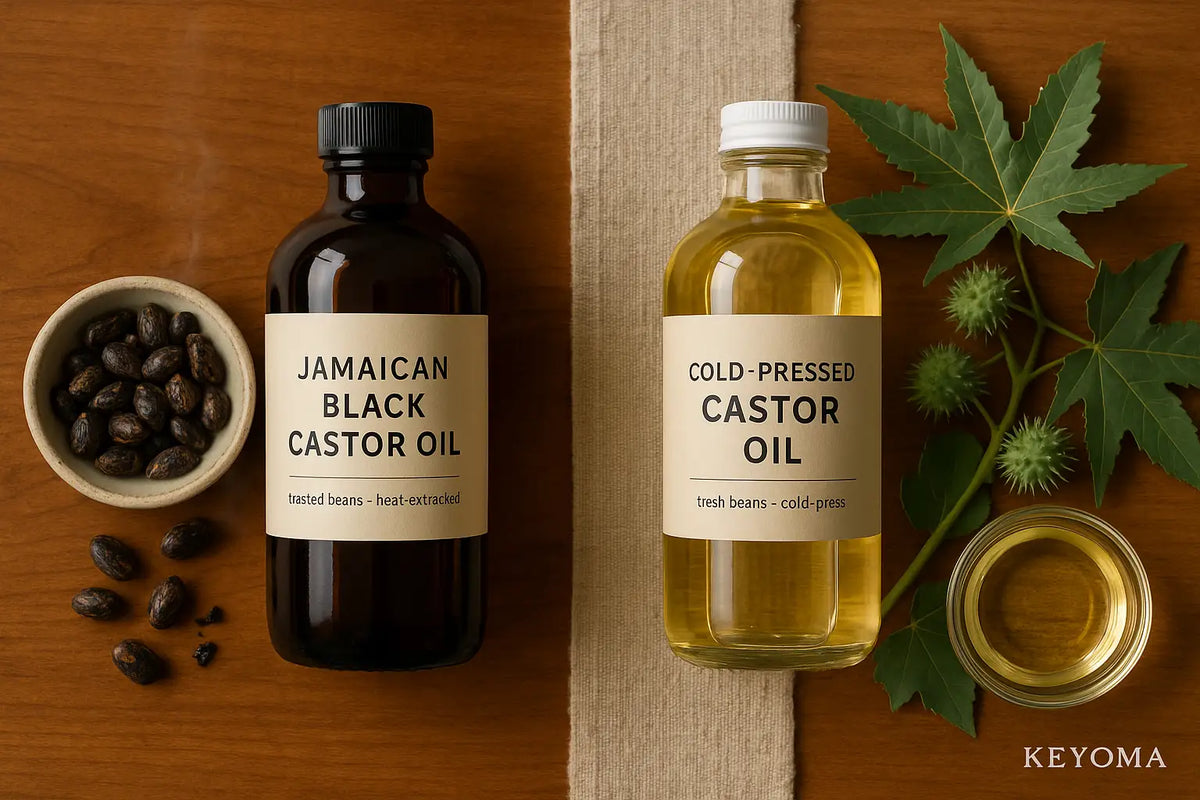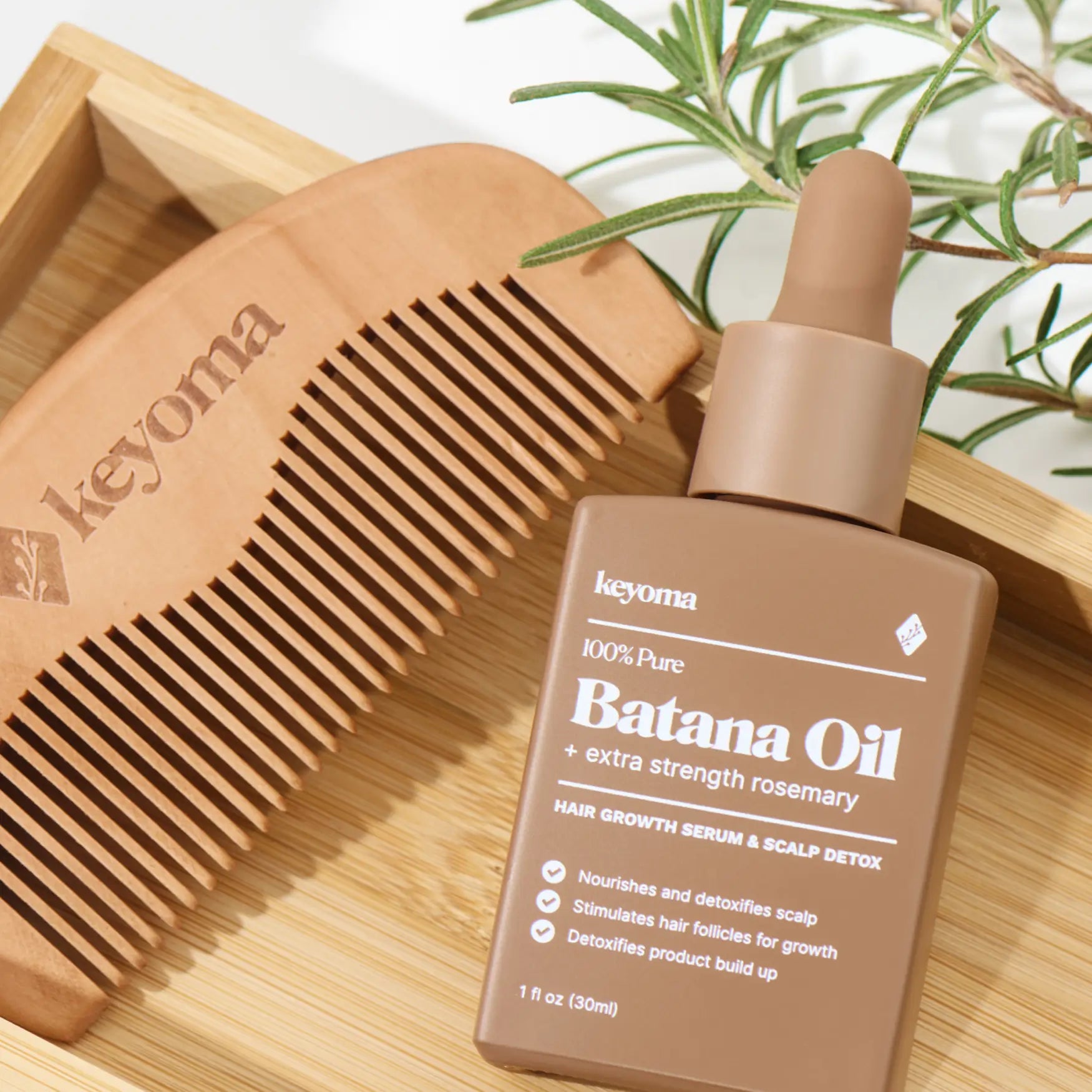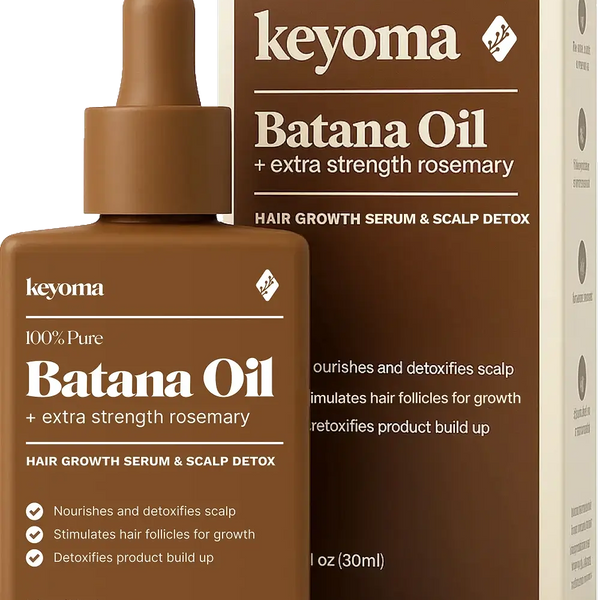In this article
You have likely seen castor oil used in beauty and wellness for generations because it supports hair and skin. With multiple types on shelves, you need to know how they differ to pick what suits you best. Here, you will look at cold pressed castor oil and Jamaican black castor oil, their distinct traits, benefits, and everyday uses.
Key Takeaways
-
Castor oil is cold-pressed and lighter, while Jamaican black castor oil is made from roasted beans, giving it a darker color, thicker texture, and higher alkalinity.
-
Both contain ricinoleic acid, which helps moisturize, reduce inflammation, and support scalp and hair health.
-
Castor oil is better for sensitive skin and daily use, while Jamaican black castor oil works well for deep conditioning and balancing scalp pH.
-
Choice depends on hair and skin needs, with both oils offering hydration and protective benefits.
What Is Jamaican Black Castor Oil?

Black castor oil comes from roasted castor beans, and heat is used during extraction. Yellow castor oil is pressed cold from fresh beans. You will see more on extraction below. People often call black castor oil Jamaican black castor oil because the roasting-first approach began in Jamaica.
What Is Castor Oil?

You can apply castor oil to skin and hair for possible cosmetic benefits, including a healthy-looking glow and support for hair growth. Castor oil contains the moisturizing fatty acid ricinoleic acid.
It appears in many cosmetics and skin-care products, usually as a supporting ingredient rather than the main active. It has been shown to penetrate the skin and can help other ingredients move deeper.
Benefits of Jamaican Black Castor Oil vs. Castor Oil
If your scalp skin skews too acidic, the higher alkalinity of Jamaican Black Castor Oil may help. Too much acidity can show up as pimples, redness, and excess oil. Your scalp may look greasy, feel itchy, and react easily.
In that case, applying Jamaican Black Castor Oil can help balance scalp pH and calm irritation. Regular castor oil has a lower natural pH and often works better for reducing frizz without ash. That lowers the negative static on the hair fiber’s surface and can reduce breakage.
Difference Between Castor Oil And Jamaican Black Castor Oil
Jamaican Black Castor Oil has become a key part of many hair care routines. Start with the basics so you can see how it differs from standard castor oil.
|
Feature |
Castor Oil |
Jamaican Black Castor Oil |
|
Production Method |
Cold pressed |
Roasted then boiled seeds with ash included |
|
Color |
Light yellow |
Dark brown to black |
|
Consistency |
Thin, fluid |
Thick, viscous |
|
Scent |
Neutral |
Smoky, nutty |
|
pH Level |
Neutral to slightly acidic |
Higher alkalinity |
|
Best For |
Sensitive skin, light daily use |
Deep conditioning, intensive treatments |
Jamaican Black Castor Oil vs. Castor Oil: Method of Extraction
To make Jamaican Black Castor Oil, producers roast castor beans, grind them into a thick paste, and boil the paste in hot water. Because oil and water have different densities, the oil rises to the top, where it is separated and collected. Oil obtained this way is commonly called Jamaican Black Castor Oil.
Castor oil from castor beans (Ricinus communis) is obtained with a cold press. Unlike Jamaican Black Castor Oil, the beans are not roasted or exposed to high heat.
The oil comes from pressing raw beans. Ricinoleic acid, the active component, appears in both Jamaican Black Castor Oil and castor oil and contributes to their cosmetic benefits.
Jamaican Black Castor Oil vs. Castor Oil: Alkalinity
Roasting the beans creates black ash that helps give Jamaican Black Castor Oil its deep color. Because ash is alkaline, it raises the oil’s alkalinity.
Compared with Castor Oil, Jamaican Black Castor Oil typically shows greater alkalinity. Processing drives this difference. Higher alkalinity can lift the cuticle, which may help nutrients reach the shaft and scalp. When used on the scalp, ricinoleic acid, present in both types, supports hair growth.
Jamaican Black Castor Oil vs. Castor Oil: Color and pH Level
Color is the easiest way to tell them apart. Traditional castor oil is usually yellow, and a lighter shade often signals higher purity. Burned bean ash gives Jamaican black castor oil its darker tone.
Processing also influences pH. Castor oil is slightly acidic, while the Jamaican version is more alkaline because it includes bean ash. Castor oil pH is listed at 5.8, and Jamaican black castor oil at 6.5.
How to Use Jamaican Black Castor Oil vs. Castor Oil
Now that you know how they differ, you can match each oil to the job. The thicker, higher-alkalinity Jamaican Black Castor Oil suits targeted scalp care and deep conditioning, while lighter, cold pressed Castor Oil fits daily frizz control and simple face serums.
Start with clean skin or scalp, use a small amount, and let it absorb before layering other products. The steps below walk you through what to do.
Jamaican Black Castor Oil for Hair
Many hair care brands include this oil in their products. To keep your routine simple and effective, pair Jamaican Black Castor Oil with growth-friendly essential oils like peppermint or rosemary. You can also try a quick DIY mask with Jamaican Black Castor Oil to nourish your scalp and support growth.
-
Step 1: Take Jamaican Black Castor Oil and Coconut Oil in a 1:1 ratio. Add a few drops of rosemary essential oil.
-
Step 2: After blending well, apply the mix to your scalp.
-
Step 3: Massage for 3–5 minutes, then leave it on for 30 minutes.
-
Step 4: Rinse with a gentle shampoo, then follow with conditioner.
Castor Oil Serum for Skin
Aging is natural, but early signs can feel frustrating. With castor oil on hand, you have a deeply emollient option that absorbs well. It hydrates your face and can help it look smoother.
-
Step 1: Cleanse with a mild face wash. Pat dry with a clean towel.
-
Step 2: Use a cotton ball to sweep away any leftover cleanser.
-
Step 3: Apply Castor Oil to your palms and massage your face, focusing on areas with fine lines and wrinkles. Start at the outer eye corners and move inward toward the nose.
-
Step 4: Repeat twice daily.
Jamaican Black Castor Oil vs. Castor Oil: Which One Is Better?
Both versions are thicker oils, which makes them useful in colder months. They are rich in fatty acids and offer several benefits for hair and scalp. Ricinoleic acid, one of the 18 fatty acids in castor oil, is known for helping reduce inflammation.
It makes sense that castor oil shows up often in routines for scalp comfort and hair growth. Yellow castor oil and Jamaican black castor oil both support hair, and Jamaican Black Castor Oil may offer a few extra advantages because the beans are roasted.
Find What Works Best for Your Hair With Keyoma
You now have a clear view of Jamaican Black Castor Oil vs Castor Oil. If you plan to switch from your current hair oil, choose organic, cold pressed Jamaican Black Castor Oil and watch for improvements in hair and skin texture. For more simple, practical hair care tips, follow the Keyoma's haircare blog.
Featured Product
100% Pure Batana Oil + Rosemary









